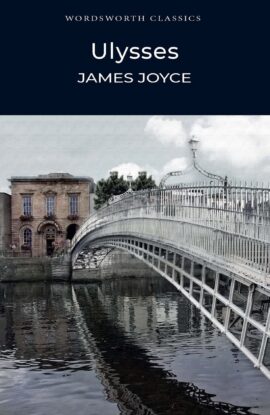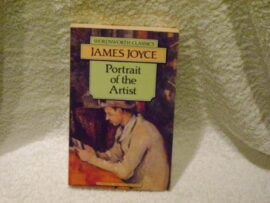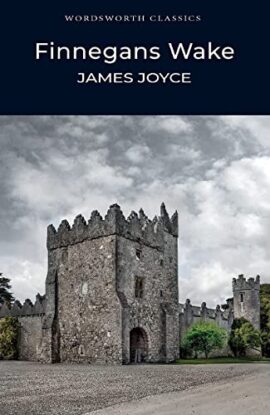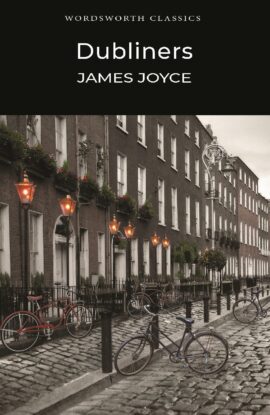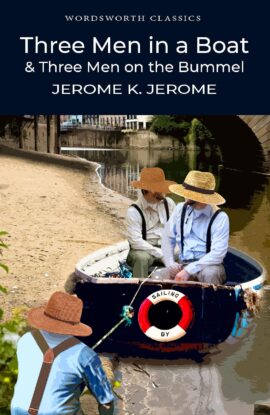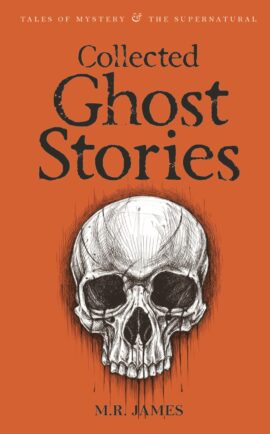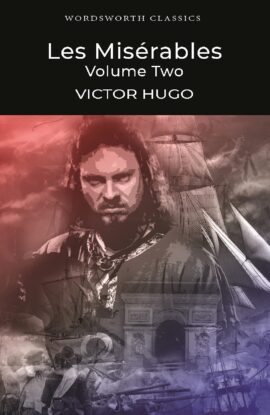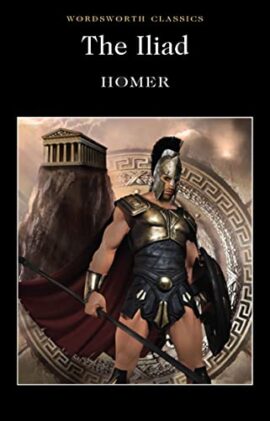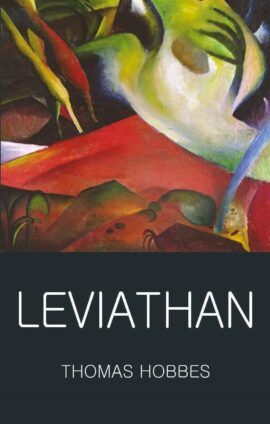Affichage de 325–336 sur 1221 résultatsTrié par popularité
Ulysses (Wordsworth Classics)
Ulysses by James Joyce COMPLETE AND UNABRIDGED. With a new Introduction by Cedric Watts, Research Professor of English, University of Sussex. James Joyces astonishing masterpiece, Ulysses, tells of the diverse events which befall Leopold Bloom and Stephen Dedalus in Dublin on 16 June 1904, during which Blooms voluptuous wife, Molly, commits adultery. Initially deemed obscene in England and the USA, this richly-allusive novel, revolutionary in its Modernistic experimentalism, was hailed as a work of genius by W. B. Yeats, T. S. Eliot and Ernest Hemingway. Scandalously frank, wittily erudite, mercurially eloquent, resourcefully comic and generously humane, Ulysses offers the reader a life-changing experience.
Portrait of an Artist As a Young Man
Portrait of the Artist As a Young Man by James Joyce with an Introduction and Notes by Dr. Jacqueline Belanger, University of Cardiff A Portrait of the Artist as a Young Man represents the transitional stage between the realism of Joyce's Dubliners and the symbolism of Ulysses, and is essential to the understanding of the later work. This novel is a highly autobiographical account of the adolescence of Stephen Dedalus, who reappears in Ulysses, and who comes to realize that before he can become a true artist, he must rid himself of the stultifying effects of the religion, politics and essential bigotry of his background in late 19th century Ireland.
Finnegans Wake (Wordsworth Classics)
Finnegans Wake is the book of Here Comes Everybody and Anna Livia Plurabelle and their family - their book, but in a curious way the book of us all as well as all our books. Joyce's last great work, it is not comprised of many borrowed styles, like Ulysses, but, rather, formulated as one dense, tongue-twisting soundscape. This 'language' is based on English vocabulary and syntax but, at the same time, self-consciously designed to function as a pun machine with an astonishing capacity for resisting singularity of meaning. Announcing a 'revolution of the word', this astonishing book amounts to a powerfully resonant cultural critique - a unique kind of miscommunication which, far from stabilizing the world in meaning, constructs a universe radically unfixed by a wild diversity of possibilities and potentials. It also remains the most hilarious, 'obscene', book of innuendos ever to be imagined.
Dubliners
"Dubliners" was completed in 1905, but a series of British and Irish publishers and printers found it offensive and immoral, and it was suppressed. The book finally came out in London in 1914, just as Joyce's "Portrait of the Artist as a Young Man" began to appear in the journal "Egoist" under the auspices of Ezra Pound. The first three stories in "Dubliners" might be incidents from a draft of "Portrait of the Artist," and many of the characters who figure in "Ulysses" have their first appearance here, but this is not a book of interest only because of its relationship to Joyce's life and mature work. It is one of the greatest story collections in the English language--an unflinching, brilliant, often tragic portrait of early twentieth-century Dublin. The book, which begins and ends with a death, moves from "stories of my childhood" through tales of public life. Its larger purpose, Joyce said, was as a moral history of Ireland.
THREE MEN IN A BOAT & THREE MEN ON THE BUMMEL – WWC
Three Men in a Boat There are four of them - George, Harris, the writer himself and that dog, Montmorency - all participants in a boating expedition on the Thames. The difficulties and vicissitudes heaped upon these innocents develop to epic proportions as they experience the hazards of the great English waterway. Their problems are in no way diminished by the outrageous behaviour of Montmorency, who lays waste several riverside communities in the course of their journey. Three Men on the Bummel 'What is a bummel?' said George. 'How would you translate it?' 'A bummel,' I explained, 'I should describe as a journey, long or short, without an end: the only thing regulating it being the necessity of getting back within a given time to the point from which one started . . . ' After considerable indecision the bummel takes our heroes to Germany's Black Forest where they manage to disrupt the tranquil way of life usually enjoyed by the denizens, whose curious behaviour they closely observe and record in their account of this second epic journey. Even without that dog, chaos and mayhem reign supreme.
Collected Ghost Stories
Collected Ghost Stories by M. R. James. M.R. James is probably the finest ghost-story writer England has ever produced. These tales are not only classics of their genre, but are also superb examples of beautifully-paced understatement, convincing background and chilling terror. As well as the preface, there is a fascinating tail-piece by M.R. James, Stories I Have Tried To Write , which accompanies these thirty tales. Among them are 'Casting the Runes', 'Oh, Whistle and I'll come to you, My Lad', 'The Tractate Middoth', 'The Ash Tree' and 'Canon Alberic's Scrapbook'. There are some authors one wishes one had never read in order to have the joy of reading them for the first time. For me, M.R. James is one of these . Ruth Rendall
Turn of the Screw & the Aspern Papers (Wordsworth Classics)
With an Introduction and Notes by Dr Claire Seymour, University of Kent at Canterbury.The Turn of the Screw is the classic ghost story for which James is most remembered. Set in a country house, it is a chilling tale of the supernatural told by a master of the genre.The Aspern Papers is a tale of Americans in Europe, a theme in which Henry James is at his most assured and accomplished. The author cleverly evokes the drama of comédie humaine against the settings of a Venetian palace.
Les Miserables Volume 2
Les Miserables Volume 2With an Introduction and Notes by Roger Clark, University of Kent at CanterburyOne of the great Classics of Western Literature, Les Miserables is a magisterial work which is rich in both character portrayal and meticulous historical description. Characters such as the absurdly criminalised Valjean, the street urchin Gavroche, the rascal Thenardier, the implacable detective Javert, and the pitiful figure of the prostitute Fantine and her daughter Cosette, have entered the pantheon of literary dramatis personae.
Odyssey
With an Introduction and Notes by Adam Roberts Royal Holloway, University of London Homer's great epic describes the many adventures of Odysseus, Greek warrior, as he strives over many years to return to his home island of Ithaca after the Trojan War. His colourful adventures, his endurance, his love for his wife and son have the same power to move and inspire readers today as they did in Archaic Greece, 2800 years ago. This poem has been translated many times over the years, but Chapman's sinewy, gorgeous rendering (1616) stands in a class of its own. Chapman believed himself inspired by the spirit of Homer himself, and matches the breadth and power of the original with a complex and stunning idiom of his own. John Keats expressed his admiration for the resulting work in the famous sonnet, 'On first looking into Chapman's Homer': 'Much have I travelled in the realms of gold...'
The Iliad
With an Introduction and Notes by Adam Roberts, Royal Holloway, University of London. The product of more than a decade's continuous work (1598-1611), Chapman's translation of Homer's great poem of war is amagnificent testimony to the power of The Iliad. In muscular, onward-rolling verse Chapman retells the story of Achilles, the great warrior, and his terrible wrath before the walls of besieged Troy, and the destruction it wreaks on both Greeks and Trojans.Chapman regarded the translation of this epic, and of Homer's Odyssey (also available in Wordsworth Editions) as his life's work, and dedicated himself to capturing the 'soul' of the poem.Swinburne praised the resulting translation for its 'romantic and sometimes barbaric grandeur, its freshness, strength, and inexhaustible fire', qualities that reflect the grandeur, fire and brutality of the original poem. This new edition includes a critical introduction and extensive notes, rendering Chapman's extraordinary poetic masterpiece accessible to modern readers.
Leviathan (Wordsworth Classics of World Literature)
Leviathan by Thomas Hobbes with an Introduction by Dr Richard Serjeantson, Trinity College, Cambridge Since its first publication in 1651, Thomas Hobbes's Leviathan has been recognised as one of the most compelling, and most controversial, works of political philosophy written in English. Forged in the crucible of the civil and religious warfare of the mid-seventeenth century, it proposes a political theory that combines an unequivocal commitment to natural human liberty with the conviction that the sovereign power of government must be exercised absolutely. Leviathan begins from some shockingly naturalistic starting-points: an analysis of human nature as being motivated by vain-glory and pride, and a vision of religion as simply the fear of invisible powers made up by the mind. Yet from these deliberately unpromising elements, Hobbes constructs with unparalleled forcefulness an elaborate, systematic, and comprehensive account of how political society ought to be: ordered, law-bound, peaceful. In Leviathan, Hobbes presents us with a portrait of politics which depicts how a state that is made up of the unified body of all its citizens will be powerful, fruitful, protective of each of its members, and - above all - free from internal violence.
Histories (Wordsworth Classics of World Literature)
Translated with Notes by George Rawlinson. With an Introduction by Tom Griffith.Herodotus (c480-c425) is 'The Father of History' and his Histories are the first piece of Western historical writing. They are also the most entertaining.Why did Pheidippides run the 26 miles and 385 yards (or 42.195 kilometres) from Marathon to Athens? And what did he do when he got there? Was the Battle of Salamis fought between sausage-sellers? Which is the oldest language in the world? Why did Leonidas and his 300 Spartans spend the morning before the battle of Thermopylae combing their hair? Why did every Babylonian woman have to sit in the Temple of Aphrodite until a man threw a coin into her lap, and how long was she likely to sit there? And what is the best way to kill a crocodile?This wide-ranging history provides the answers to all these fascinating questions as well as providing many fascinating insights into the Ancient World.









